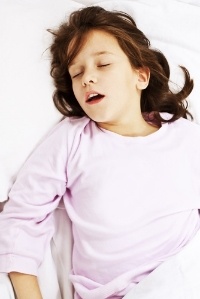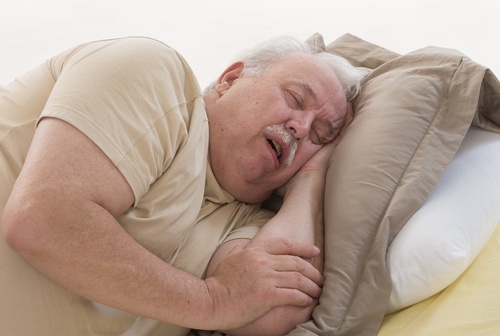Previously we discussed how not all patients with sleep apnea fit the typical profile of someone suffering from a sleep disorder. The notion that mostly middle-aged, overweight men are the ones likely to develop sleep apnea is a misconception that often leads to misdiagnosis in atypical patients with sleep apnea.
And while it’s true that heavyset men over the age of 40 are the highest “at-risk” group for having sleep apnea, it by no means is a comprehensive representation of all sleep apnea sufferers.
For example, women with sleep apnea are often mistreated for other sleep disorders such as insomnia because many general practitioners hold tight to the belief that women aren’t as likely to have sleep apnea as men.
Here we hope to shed light on how age plays a role in the development of sleep apnea, and symptoms, diagnosis, and treatments that may differ based on a patient’s age. There are many risk factors for developing obstructive sleep apnea:
- Weight
- Age
- Enlarged tonsils/adenoids
- Natural causes such as being born with a narrower throat of having an enlarged tongue which can fall back and block the airway.
- Frequent alcohol use
- Smoking
And while weight is often cited as the most likely cause of sleep apnea, these other risk factors are still very prevalent and deserving of discussion.
Age and Sleep Apnea
Although obstructive sleep apnea can develop in any person at any age, there are certain age groups that are at higher risk for sleep apnea and other age groups in which the cause of the obstruction, and subsequent treatments, may differ.
The majority of the literature that discusses sleep apnea diagnosis and treatment is generally based on the age groups ranging from young adults to the middle-aged. Here we will focus the discussion on the two outlying groups: children and the elderly.

Sleep apnea and children
Many children snore, but only about 2-3% of children, of all ages, have sleep apnea. Causes of snoring in children can include respiratory infections, a deviated septum, obesity, exposure to tobacco smoke, having less muscle tone than normal, and enlarged tonsils/adenoids.
In most cases of children with sleep apnea, it is the enlarged tonsils or adenoids that are responsible for developing sleep apnea. These swollen glands act to block the airway during sleep and prevent airflow from reaching the respiratory system. When the airway becomes blocked, blood oxygen levels plummet, and the child responds by gasping or making choking sounds as their bodies attempt to return to normal breathing.
While obesity is generally found to be a major risk factor for OSA in adults, it wasn’t found to be a major risk factor for younger children. A study published by the American Academy of Sleep Medicine (AASM) discovered that “the risk of OSA among Caucasian adolescents 12 years of age and older increased 3.5 fold with each standard deviation increase in body mass index (BMI) z-score, while the risk of OSA did not significantly increase with increasing BMI among younger children.”
“The results suggest that the increase in risk among overweight and obese adolescents may result from developmental changes such as reductions in upper airway tone and changes to anatomic structures.”
Treatment for children with sleep apnea
- Many children can outgrow their sleep apnea as they age and their throats get larger and throat muscles gain definition and strength.
- When tonsils and adenoids are to blame for sleep apnea, having the glands removed with adenotonsillectomy surgery usually cures 80-90% of children affected with sleep apnea.
- Continuous positive airway pressure (CPAP) therapy
- Dental appliances for children whose facial bone growth is mostly complete
- Weight management for older children 12+
Sleep apnea and the elderly
Sleep disorders and troubles increase with age, and more than 50% of adults 65 and up have some form of chronic sleep-related complaints including difficulty falling asleep, trouble maintaining sleep, and the total amount of nightly sleep.
Studies show that as a person ages the prevalence of sleep apnea increases. A study published by the American Thoracic Society (ATS) showed the prevalence of sleep apnea (AHI > 10) in adult men of various ages:
- 3.2% prevalence in men 20-44 years old
- 11.3% prevalence in men 45-64 years old
- 18.1% prevalence in men 61-100 years old
The reasons for the higher prevalence of sleep apnea in the elderly is believed to be caused by increased fatty deposits in the parapharyngeal area (areas in the head and neck), lengthening of the soft palate, and changes in body structures surrounding the pharynx.
Post-menopausal women not on hormone replacement therapy also run a higher risk of developing sleep apnea. Reasons for the development of post-menopausal sleep apnea are believed to be related to weight gain and unclear hormonal changes.
A separate study published by the ATS indicates that although the prevalence of sleep apnea increases with age, the severity of sleep apnea decreases with age.
Why is sleep apnea is less often diagnosed in the elderly
One of the main reasons that elderly patients are diagnosed less often with OSA is because they present atypical symptoms than the traditional model of a standard sleep apnea patient.
Traditional risk factors such as obesity, BMI, neck circumference, and snoring are less prevalent among the elderly leading to diagnostic challenges for healthcare professionals.
The association between OSA and other medical conditions such as hypertension, congestive heart failure, stroke, coronary artery disease, and atrial fibrillation makes getting elderly patients properly diagnosed critical as these are among the leading causes of death in this population.
Misdiagnosis and under-diagnosis can be attributed to the atypical symptoms presented by this group, cognitive issues of the patient, a lack of self-reporting, as well as a lack of awareness and criteria for diagnosing the elderly, according to a study published in Internet Scientific Publications.
If you live in Alaska and suspect, for any reason, that you (or a loved one) may have a sleep disorder and would like to speak with a sleep specialist, contact the Alaska Sleep Clinic by clicking the link below. Once your information has been entered a sleep educator will contact you within 48 business hours for a quick 10-minute over-the-phone consultation to determine if a sleep study is right for you.
It’s never too early, or too late, to get help with sleep apnea.









